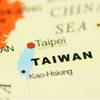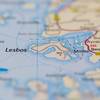A Gift to US Inland Waterways
The nation and its inland waterways received a great gift at the end of 2014. On December 16, 2014, the Senate voted 76-16 to pass H.R. 5571, tax extenders legislation that included a 9-cent increase in the inland waterways diesel user fee. The increase will be effective April 1, 2015 and funds – around $40 million from industry levies – will be deposited into the Inland Waterways Trust Fund for the benefit of priority navigation project construction and major rehabilitation.
On December 3, 2014, the House of Representatives passed by a vote of 404-17 the “Achieving a Better Life Experience (ABLE)” Act that included the 9-cent increase to the user fee. The user fee increase is the most recent key recommendation of the Capital Development Plan (CDP) to be adopted into law, with four of the CDP’s elements adopted through the passage of WRRDA.
Also, in December, the House and Senate passed the “The Consolidated and Further Continuing Appropriations Act of 2015,” known as a “Cromnibus,” (H.R. 83) with details from the Energy and Water Development and Related Agencies Appropriations Act of 2015, as follows:
- The Corps received strong Civil Works’ program funding at $5.454 billion, $921.5 million above the Administration’s request.
- The Construction account funding of $1.639.5 billion is an increase of $514.5 million above the Administration’s proposal, including $281 million, a $112 million increase above the Administration’s request, for Inland Waterways Trust Fund (IWTF) projects, to be allocated by the Secretary of the Army.
- Operations & Maintenance is funded at $2.908.5 billion, $308.5 million above the Administration’s request and $47.5 million above FY14, including at least $42 million in additional funds for inland navigation.
- The Olmsted project is funded to at least $160 million at the 85%/15% cost-share change enacted in WRRDA. The Lower Mon project is funded to at least $9 million.
- No less than $1.1 billion is provided from the Harbor Maintenance Trust Fund, a $100 million increase above FY ’14 and $185 million higher than the Administration proposal.
- No funding is provided for construction of hydrologic separation measures related to Asian carp.
These developments, on top of the enactment last June 2014 of the Water Resources Reform & Development Act (WRRDA), are big triumphs for the nation and its inland waterways transportation system. The inland rivers employ more than half-a-million people and offer the most economical, energy-efficient, and environmentally sound way to move the commodities the U.S. and the world depend upon.
This critical link in the nation’s transportation supply chain deserved these recent victories, and it will continue to deliver wins for the U.S. economy as long as we compete in the world market.
(As published in the February 2015 edition of Marine News - http://magazines.marinelink.com/Magazines/MaritimeNews)











